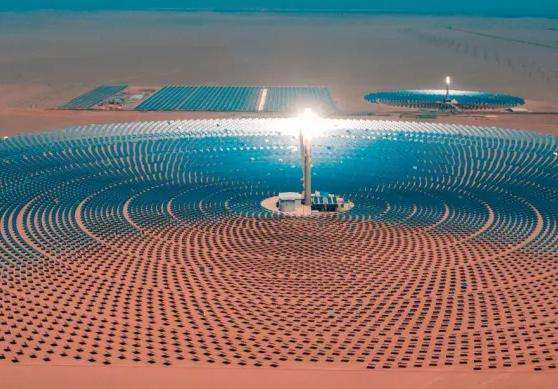No. The automobile generator is an important part of the automobile. The synchronous generator works according to the principle of electromagnetic induction. It converts mechanical energy into electrical energy through the relative movement of the magnetic field of the rotor and the stator winding. When the rotor is driven by an external force, the magnetic field of the rotor and the stator conductor move relative to each other, that is, the conductor intersects the magnetic field lines, from so that an induced electromotive force is generated in the conductor and its direction can be determined according to the right-hand rule. So, what are the reasons why the automobile generator is not producing electricity?
What are the reasons why the car generator does not produce electricity: The generator is overheated
(1) The generator does not work according to the specified technical conditions, such as the statorthe blood pressure is too high and iron loss increases; the load current is too large, and the copper loss of the stator winding increases, which slows down the speed of the cooling fan, affecting the heat dissipation of the generator; the power factor is too low, which increases the rotor excitation current, causing the rotor to heat up. Check whether the monitoring instrument indication is normal. If this is abnormal, necessary adjustments and treatments should be made to operate the generator according to the specified technical conditions.
(2) The three-phase load current of the generator is unbalanced, and the overloaded single-phase winding will overheat if the difference between the three-phase current exceeds 10% of the rated current; This is a serious phase current imbalance. Unbalanced three-phase current will produce a reverse magnetic field, thereby increasing losses and causingt heating of components such as pole windings and ferrules. The three-phase load must be adjusted to keep the current in each phase as balanced as possible.
(3) The air duct is clogged with dust and ventilation is poor, making it difficult for the generator to dissipate heat. Dust and grease in the air duct must be removed so that the air duct does not become clogged.
(4) The inlet air temperature is too high or the inlet water temperature is too high and the chiller is blocked. The inlet air or water temperature must be lowered to eliminate blockage in the cooler. Before the fault is cleared, the generator load must be limited to reduce the generator temperature.
(5) Too much or too little grease is added to the bearing. Grease should be added in accordance with regulations, generalment 1/2 ~ 1/3 of the bearing chamber (the upper limit is used for low temperatures). speed, and the upper limit is used for high speed). lower limit), and must not exceed 70% of the bearing chamber.
(6) Bearing wear. If the wear is not significant, the bearing will overheat locally; if wear is severe, the stator and rotor may rub against each other, causing the stator and rotor to overheat. Bearings should be checked for noise. If friction between the stator and rotor is detected, the machine should be stopped immediately for maintenance or replacement of the bearings.
(7) The insulation of the stator core is damaged, causing a short circuit between the leaves, causing an increase in local eddy current loss in the core and heat generation. In severe cases, the stator winding will be damaged. damaged. The machine must be stopped immediately for maintenance.
(8) The parallel wire of the stator winding is broken, causing the current of other wires to increase and generate heat. The machine must be stopped immediately for maintenance.
What are the reasons why the car generator does not generate electricity: abnormal performance
1 When the engine is running or driving normally, the instrument charging indicator light continues to light up.
Causes of breakdowns and troubleshooting
1. Troubleshooting if the generator drive belt is loose or worn: Adjust or replace the generator drive belt.
Check and adjust the generator drive belt:
p>① Visually inspect the generator drive belt for excessive wear, worn curtains, etc. If there is a problem, replace the generator drive belt.
② Check the voltage of thegenerator drive belt. A drive belt that is too loose will cause slipping, and a drive belt that is too tight will affect the life of the generator bearings. To check the drive belt tension, you can use your fingers to press hard on the drive belt between the two pulleys. If the degree of reduction of the transmission belt is about 10mm, the tension is generally considered appropriate if the amount of reduction; is too great, the tension will be insufficient, resulting in slippage if the drive belt is almost. If there is no reduction, the drive belt is too tight. Adjustments are necessary. 2. Troubleshoot loose wire connections or short circuits: Check wire connections between generator and battery terminals, reinstall and lock nuts to wire terminals.
3. Depannage when the main fuse is blown: Replace the main fuse.
4. Internal generator faults usually occur at the voltage regulator. Troubleshooting: Repair the generator.
5. Troubleshooting poor grounding: Check the ground wire between the negative battery terminal and the car body, reinstall and tighten it.
6. Damaged battery














